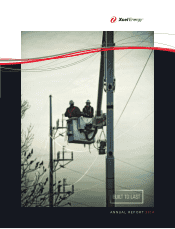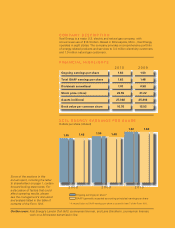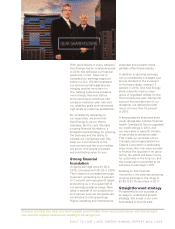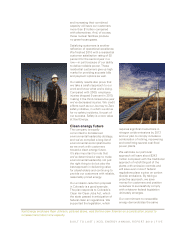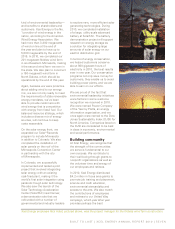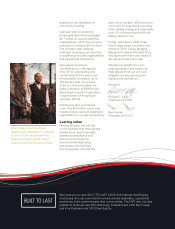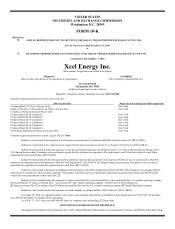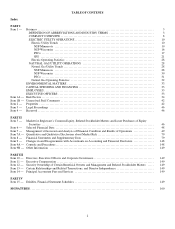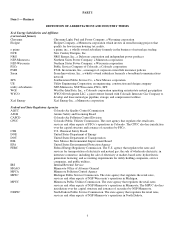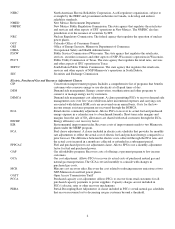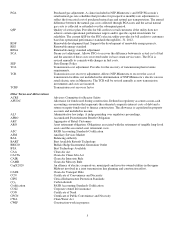Xcel Energy 2010 Annual Report Download - page 7
Download and view the complete annual report
Please find page 7 of the 2010 Xcel Energy annual report below. You can navigate through the pages in the report by either clicking on the pages listed below, or by using the keyword search tool below to find specific information within the annual report.
and increasing their combined
capacity will save our customers
more than $1 billion compared
with alternatives. And, of course,
those nuclear facilities produce
no greenhouse gases.
Satisfying customers is another
reflection of operational excellence.
We finished 2010 with a residential
customer satisfaction rating of 92
percent for the second year in a
row—in part because of our ability
to deliver reliable power. Those
residential customers give us high
marks for providing accurate bills
and payment options as well.
Our safety results also prove that
we take a careful approach to our
work and know what we’re doing.
Compared with 2009, employee
injuries dropped 9 percent in 2010,
making it the third consecutive year
we’ve decreased injuries. We credit
efforts such as our Journey to Zero
safety initiative, in which we strive
for no safety incidents, for part of
our success. Safety is a core value
at Xcel Energy.
Clean energy future
The company is equally
committed to its balanced
environmental leadership strategy,
and we’ve compiled a long list of
environmental accomplishments
as we work with customers
toward a clean energy future.
It’s also important to note that
we’ve determined a way to make
environmental leadership not just
the right thing to do but also the
best approach in delivering value
for shareholders and continuing to
provide our customers with reliable,
reasonably priced energy.
Our emission-reduction proposal
in Colorado is a good example.
The plan responds to Colorado’s
Clean Air-Clean Jobs Act, which
the state passed in anticipation of
federal clean air regulations. We
supported the legislation, which
requires significant reductions in
nitrogen oxide emissions by 2017,
and our plan to comply includes a
combination of retiring, repowering
and retrofitting several coal-fired
power plants.
We estimate our particular
approach will save about $243
million compared with the traditional
approach of retrofitting all of the
plants with emission controls and
will save even more if federal
regulations place a price on carbon
dioxide emissions. By taking a
proactive approach, we save
money for customers and position
ourselves to successfully comply
with whatever federal legislation
ultimately emerges.
Our commitment to renewable
energy demonstrates the same
BUILT TO LAST | XCEL ENERGY ANNUAL REPORT 2010 | FIVE
Xcel Energy employee Ryan Johnson, pictured above, was the line crew foreman on a construction project to
increase transmission line capacity.

